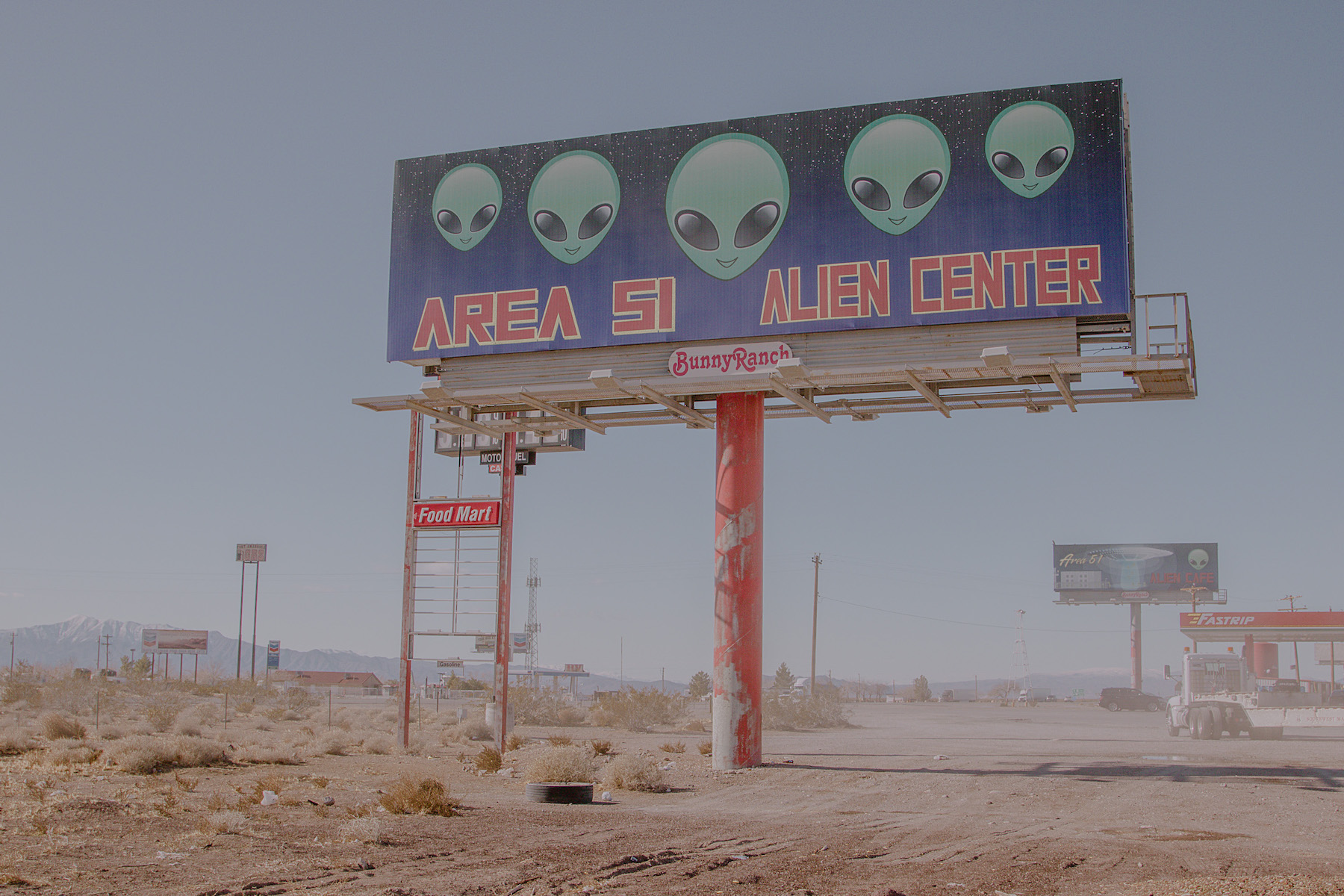Surreal photos of solitude in the American desert
- Text by Huck
- Photography by Fei Alexeli

“It’s simplicity that you do not experience anywhere else,” says Greek photographer, Fei Alexeli, about her time spent travelling around the American desert. “You’re not defined by your surroundings; there’s no scripted society that you fit into. When you’re in the desert, it feels like you can be anyone”.
After voraciously consuming American media from a young age – from Hollywood movies about road trips, to ‘Americana’ music and Jack Kerouac’s On The Road – Alexeli finally made the trip to California in 2019, and again in 2020. “It was like stepping onto a new planet,” says Alexeli of travelling from Greece to the US desert. “In Greece, we have these mountains and greenery, and it’s very lively.” The dessert, by comparison, was stunningly sparse and isolated.


On both trips, Alexelli drove through the American desert with her camera in tow, shooting photos that now form part of a series entitled ShowTown. “My first time (in the US), I was on my own, so the vastness of the dessert was very overwhelming,” she recalls.
“I guess I was looking for some kind of freedom in the desert, but there are also so, so many layers of culture to discover.” Being there at the time of Donald Trump’s presidency was, Alexeli says, “super intense”: she’d often see the former president’s face emblazoned across trailers and flags.


What’s striking about Alexeli’s pictures is just how empty the landscape seems, a setting that imbues her images with an eerie quality. Often, the structures she photographed were abandoned and left empty – particularly in the country’s ‘ghost towns’ – with citizens and tourists nowhere to be seen. “There were often moments where I felt completely alone,” she says.
There are thousands of these ‘ghost towns’ across America, where once-thriving communities have dwindled over the decades, some due to economic hardships, while others were immediately evacuated. These derelict buildings in Alexeli’s photographs – which sit at the mercy of time and nature – offer an intriguing glimpse at the past.
Alexeli says the series is very much ongoing, and she plans to travel back to America when the pandemic ends. But next time, she wants people to feature in her photographs. “People who go to live in the desert is something that I find super fascinating – like, I want to know why,” she says. But for Alexeli, the appeal of going as a visitor is clear: “Being there, you just feel the essence of freedom.”








Follow Fei Alexeli on Instagram.
Enjoyed this article? Like Huck on Facebook or follow us on Twitter.
You might like

Remembering New York’s ’90s gay scene via its vibrant nightclub flyers
Getting In — After coming out in his 20s, David Kennerley became a fixture on the city’s queer scene, while pocketing invites that he picked up along the way. His latest book dives into his rich archive.
Written by: Miss Rosen

On Alexander Skarsgård’s trousers, The Rehearsal, and the importance of weirdos
Freaks and Finances — In the May edition of our monthly culture newsletter, columnist Emma Garland reflects on the Swedish actor’s Cannes look, Nathan Fielder’s wild ambition, and Jafaican.
Written by: Emma Garland

Capturing life in the shadows of Canada’s largest oil refinery
The Cloud Factory — Growing up on the fringes of Saint John, New Brunswick, the Irving Oil Refinery was ever present for photographer Chris Donovan. His new photobook explores its lingering impacts on the city’s landscape and people.
Written by: Miss Rosen

Susan Meiselas captured Nicaragua’s revolution in stark, powerful detail
Nicaragua: June 1978-1979 — With a new edition of her seminal photobook, the Magnum photographer reflects on her role in shaping the resistance’s visual language, and the state of US-Nicaraguan relations nearly five decades later.
Written by: Miss Rosen

A visual trip through 100 years of New York’s LGBTQ+ spaces
Queer Happened Here — A new book from historian and writer Marc Zinaman maps scores of Manhattan’s queer venues and informal meeting places, documenting the city’s long LGBTQ+ history in the process.
Written by: Isaac Muk

Nostalgic photos of everyday life in ’70s San Francisco
A Fearless Eye — Having moved to the Bay Area in 1969, Barbara Ramos spent days wandering its streets, photographing its landscape and characters. In the process she captured a city in flux, as its burgeoning countercultural youth movement crossed with longtime residents.
Written by: Miss Rosen